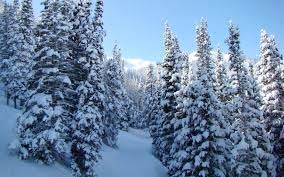 Did you know that there are a few ways to help keep your trees healthy in the winter? Many human elements can damage your trees.
Did you know that there are a few ways to help keep your trees healthy in the winter? Many human elements can damage your trees.
Heavy snow and ice storms cause damage by bending and breaking branches. Multi-stemmed evergreens, such as yews, arborvitae, and junipers, are often the most prone to damage. To protect these plants from limb breakage prior to winter, tie branches together loosely with strips of cloth or coated twine. Remove in early spring.
The branches of many hardwoods, such as Siberian elm, maples, and birch, may be seriously damaged in ice storms. Improper removal of ice or snow from the tree or shrub might increase damage. Heavy snow should be removed gently before it freezes to limbs and branches. Removing ice encased on branches can cause additional damage and should not be attempted. Instead, allow ice to melt off naturally.
Salt Damage
Salts used for deicing pavements can cause damage to trees and shrubs. Symptoms of salt damage appear in spring and early summer and include browning of evergreens, leaf scorch, branch die back, and dead areas in turf. Branches and twigs can be killed from aerial deposits, and roots can be damaged from salt remaining in the soil. Salt will leach through well-drained soils, but damage can be extensive in poorly drained soils. Choose salt-tolerant species for sites where salt stress may be a problem.
